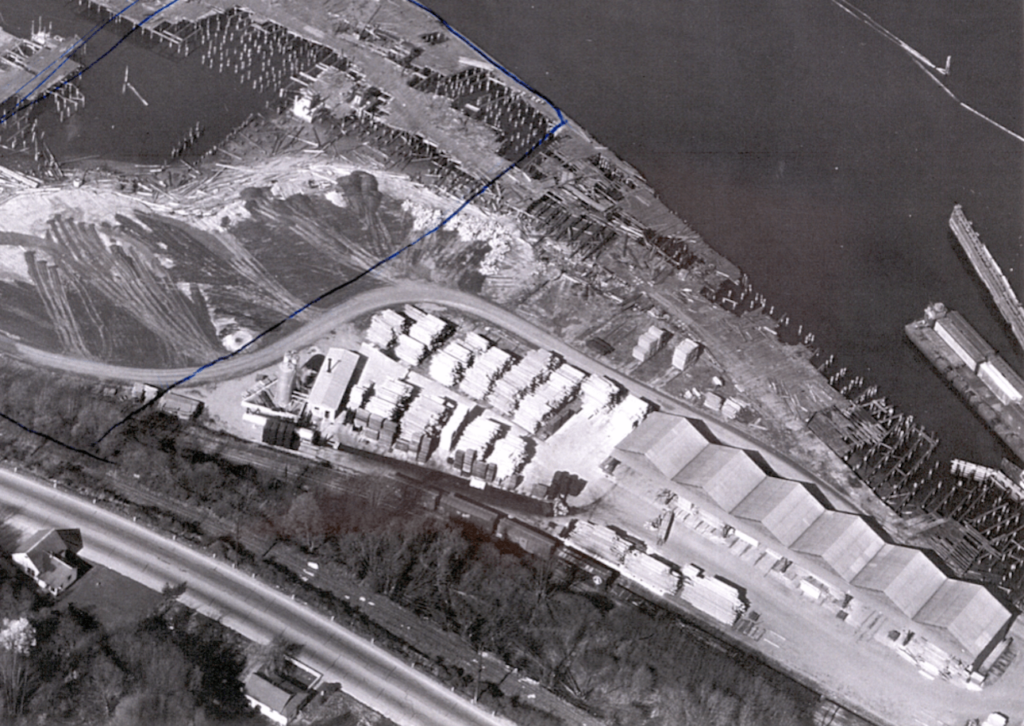Get familiar with a cleanup site along Bellingham’s waterfront that is contaminated from past operations treating wood at the RG Haley site!
Local agencies are cleaning up the site and working towards developing it into Salish Landing Park, a large public park just north of the beloved Boulevard Park. You can have a say in how the Washington State Department of Ecology might address the contaminants.
Learn more about the R.G. Haley site. You might recognize this site — it’s just north of those prominent white tarps along the water.
Submit a public comment on the site’s cleanup here between February 12th and March 12th, 2024.
We also created a virtual tour, featuring videos with transcripts and links to learn about the site’s history and issues it faces. It was created during the last public comment period on the draft Engineering Design Report in winter of 2022.
See the full transcript of the RG Haley video tour
The RG Haley cleanup site is located at the bottom of a large bluff that actually originates up at Sehome Hill. This site was where trees were milled, stored and (most significantly) treated. The chemicals that were used to treat wood such as pentachlorophenol and petroleum hydrocarbons are present in soil, groundwater and marine sediments at potentially harmful levels.

Background: An industrial history on Whatcom’s waterfronts
The Bellingham Waterfront was a seat of industrial activity for more than 100 years, an era that culminated with the closure of the Georgia-Pacific tissue mill in 2007. Industries left behind a legacy of toxic pollutants in the soil, sediment, and water — including mercury, nickel, dioxins, petroleum byproducts, and more. The shoreline was also physically altered by armoring off beaches, dredging up sediment, and filling in parts of the natural shoreline to build on.
Several other sites, such as RG Haley, also have pollution from past use that needs to be cleaned up.
See the Department of Ecology’s map of the 12 contaminated sites in Bellingham Bay and where each one is in the Model Toxics Control Act (MTCA) cleanup process. You can see what cleanup sites are near you with Ecology’s searchable map tool. RE Sources also created a printable map with an overview of the cleanup process and sites.
Learn more about the MTCA process!
Until very recently, this industrial development also resulted in the central waterfront area being largely off-limits to the public for decades, despite the fact that the City and Port of Bellingham currently own the land. While it’s easy to feel separated from this legacy, it affects places Whatcom residents know and love. Even local favorite Boulevard Park was home to a coal-fired gas plant that left heavy metals and fossil fuel byproducts.
The toxic contamination and heavily modified shoreline make the waterfront hazardous to young salmon, which need clean, protected, and connected nearshore habitat to grow and make it to the open ocean. The decline of eelgrass beds and gravel beaches which act as nurseries for forage fish (which salmon need to eat) have put an additional stress on our dwindling salmon populations.
Bellingham’s waterfront gives our community a unique opportunity to make something positive from former industrial areas. As we’ve seen from the completed cleanup at Waypoint Park in 2018 — complete with some young salmon habitat, new businesses, and a playground — it can be done.
This material is funded through a Public Participation Grant from the Washington State Department of Ecology. The content was reviewed for grant consistency but is not necessarily endorsed by the agency.
